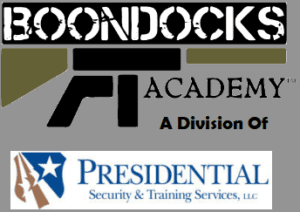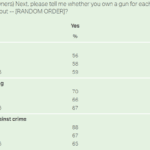Self-Defense Vs. Self-Preservation
What Gun Owners Should Know About Using a Firearm in Self-Defense
A recent Gallop Poll on guns in America indicated that 88% of Americans own firearms for “protection against crime.” That is up 23% from the year 2000. Unfortunately, most gun owners don’t fully understand the ramifications and aftermath of a self-defense shooting. With that said, let’s look at the difference between Self-Defense and Self Preservation, and what gun owners should know about using a firearm for protection.
Self-defense is defined as “the defense of one’s person or interests, especially through the use of physical force, which is permitted in certain cases as an answer to a charge of violent crime.” Gun stores and social media sites are filled with varying levels of self-defense bravado on how individuals would handle a particular situation. The myths and mantras such as “I’d rather be judged by 12 than carried by 6” or “If you shoot them outside, just make sure to drag them back in” are outdated, dangerous and can have physical and financial ramifications that can last for decades.
Self-Preservation is defined as “the protection of oneself from harm or death, especially regarded as a basic instinct in human beings and animals.” While this definition may sound similar to that of self-defense, there are some subtle differences that can have huge impacts on your response to a situation. First, in the definition of self-preservation note the lack of reference to the terms “defense” and “physical force”. In order for you to claim “self-defense” as a justifiable use of deadly force, you must have been in immediate fear of great/grave bodily injury or death. If that is the case, then even if you shoot and kill the bad guy, there is still a chance that you could also be injured or killed. Second, the definition of self-preservation includes the words “protection from harm.” When most people think of the word “harm” they think physical harm, but the legal definition of harm is “loss of or damage to a person’s right, property, or physical or mental well-being.” It is almost never discussed in gun stores or at the range, but the emotional, social and psychological harm in the aftermath of a lethal use of force can last a lifetime. Take a few minutes to read this excerpt from a friend, and now fellow firearms instructor, Larry about his incident.
“Needless to say, the incident left an emotional mark. “The next morning when I woke up, it really dawned on me what could have happened, and I lost it,” he remembers. “I was a basket case for a while. Every time I thought about the incident, it really upset me. Later, I went to the family burial plot, and was overwhelmed at how close I had come to joining them.”
One of the first things he did when he got home was to put a .45 caliber GLOCK 30 where he could reach it immediately. Was the dead man a gang-banger, with buddies who would seek revenge? He didn’t know, but he had to consider the possibility and provide for it. The hypervigilance remained for quite a while, and never entirely went away, even though no reprisals materialized.
“I went to a psychologist, and studied up on post-traumatic stress disorder,” Larry comments. “I lost appetite. I had trouble sleeping. I did have a few dreams related to the incident.” Before long, he and his wife sold the house and moved.”
The entire article called WITH A GUN TO YOUR HEAD: THE LARRY GOLDSTEIN INCIDENT was published by Massad Ayoob in American Handgunner magazine.
Larry, who had never taken a training class before the incident, began signing up for any and all training classes in the area and became a firearms instructor as a way to help others understand the many aspects of self-preservation. If you study the emotional, social and psychological aftermath of other self-defenders, you will find this is not a unique experience for Larry. Others have reported backlash and shunning from friends, family and church members, loss of job, divorce, plus a whole host of other issues related to PTSD.
Sometimes, the best way to explain the difference in approach is to look at a particular scenario. You are at home and hear someone outside your home attempting to break into your car, garage or outside storage building. Based on what I have heard in gun stores, classrooms and on social media, most gun owners would grab their gun and go outside to stop the thief. The problem with this is that in almost ALL states you cannot use deadly force to protect property. Now, if you go out there to try and stop the thief and they pull a gun on you, then you could most likely use “self-defense” to justify deadly force. While you may prevail in this situation, it doesn’t mean you will escape “unharmed.” In addition to the emotional, social, psychological and financial harm that can be accompanied with taking a life, you put your OWN life in danger. If you are shot, then who else is there to protect your family if the thieves decide to enter your home?
The self-preservationist would see the many potential pitfalls of confronting an unknown number of potentially armed criminals IN THE DARK. Instead of going to confront them, they would gather their family members in the home, call police and prepare for the potential of a home invasion. In the event of a home invasion, the self-preservationist would barricade in place (ideally with all family members) and defend that location. They would also resist the urge to clear the home, for the same reasons they wouldn’t go outside to stop a thief, and only move from a barricaded location in order to secure any additional family members in the home.
So how does the shift to self-preservation happen? It occurs through additional education, training and studying on the things that happen before, during and after a self-defense incident. If your only exposure on how to handle a home invasion or potential criminal encounter is from TV or movies, then you’re most likely going to mimic those responses. This is almost universally bad advice when it comes to truly protecting yourself and your family from harm.
If you want to learn more about self-defense and self-preservation, here are a couple of ways. 1) Take some intermediate or advance level training courses. 2) Read the written material of experts. A good place to start would be to pick up a copy of “Strait Talk on Armed Defense”, a collection of what “experts want you to know” and is edited by Massad Ayoob. 3) Join the USCCA. Their membership options provide tons of education and training material on these very topics. Plus, as a member you also become insured on a Self-defense liability insurance program that can help you legally in the event of an actual self-defense incident.
The bottom line is self-defense is what you do when you have ABSOLUTLY no other choice and you must take action to protect YOUR LIFE or the life of your family. Self-preservation are the steps you take to avoid having to resort to self-defense.

